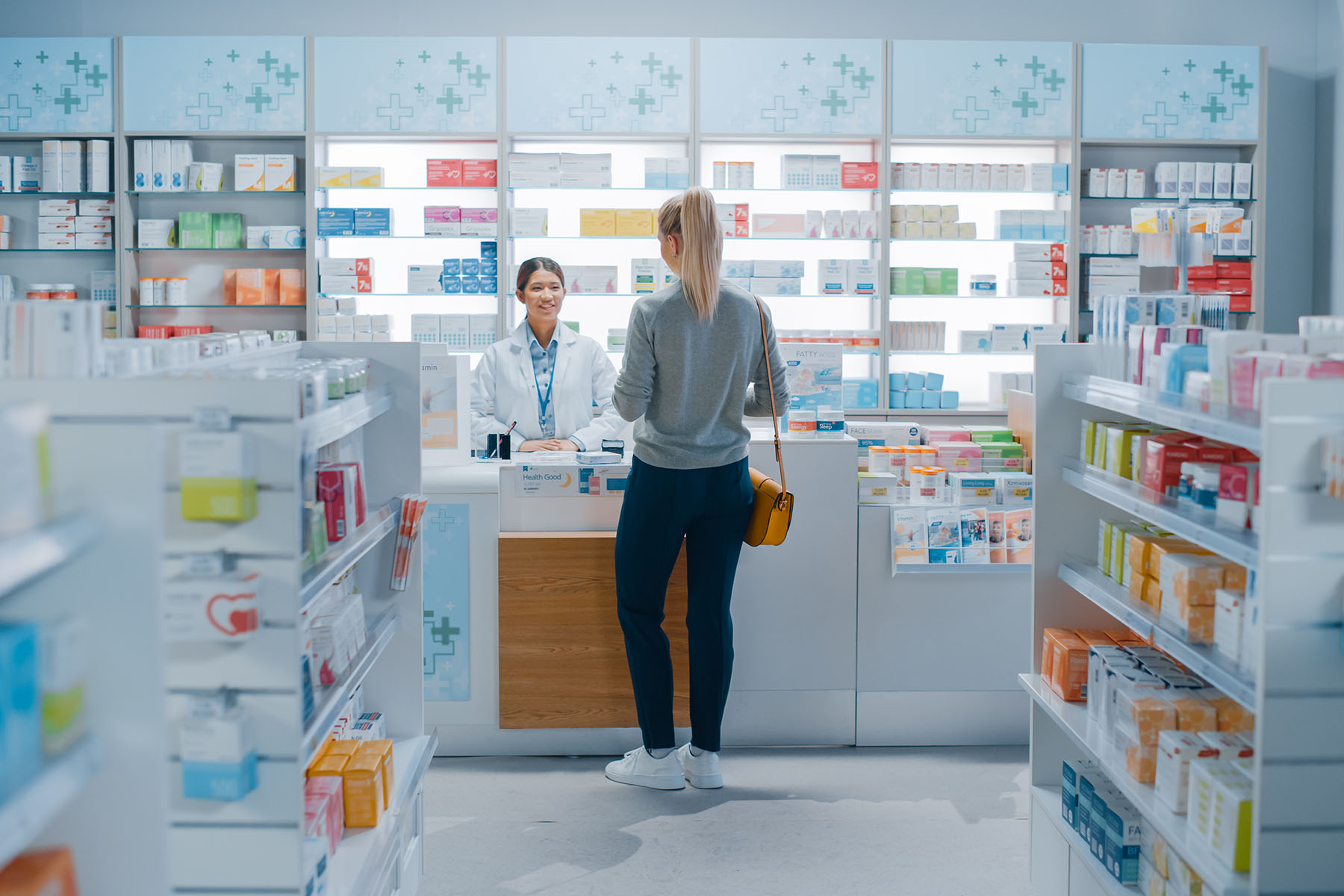Would it surprise you to know that the COVID-19 pandemic turned pharmacy priorities on its head, which could have the potential of morphing pharmacies into full-fledge healthcare centers over the long term? Pharmacy technicians (aka “techs”) and pharmacists alike were affected by COVID-19. Adding responsibilities of testing for COVID-19 and administering the vaccine in mass volumes when it became available, pharmacists and techs had to shuffle workload and priorities in a way that supported this critical role as healthcare providers. Given the convenience of the local pharmacy to most in the U.S., it’s not hard to imagine the pharmacy providing even more important healthcare services to the community.
Transition to a Bigger Role in Clinical Healthcare
Because pharmacies were part of essential services during COVID-19, staying open when many businesses couldn’t, they became a key resource for patients for treatments, prevention, and protection. KS&R surveyed retail pharmacists and technicians in May 2020, and the results showed they were optimistic, receiving accolades from customers who voiced appreciation to pharmacy staff. In fact, many pharmacists appreciated the increased consulting and educational services they were able to provide customers, citing their accessibility as a key reason for this. And since telehealth was still new to most, being able to connect with pharmacy staff when they couldn’t access their physician office was important.
“My role has significantly changed as a pharmacist. The role that I play is much larger. The number of vaccines administered increased, the number of consults for advice increased, etc. The public sees the pharmacist as the frontline healthcare worker and seeks free advice more frequently.” – Retail Pharmacist
Survey respondents predicted that lasting impacts of COVID-19 on healthcare in May 2020 would include an increase in telehealth/telemedicine (18%) and changes to customer/pharmacist interactions (increase in curbside services, in-home deliveries, mail order, etc.) (16%).
And techs, considered to be the backbone of the retail pharmacy, continue to assume many roles to support daily operations. They perform a variety of tasks, including customer-facing both at the counter and drive-through. They process prescriptions and vaccines, and, in some states, they sometimes administer vaccines. Even so, the role of the tech could be further expanded beyond conversations to more broad administration of vaccines.
While the Federal PREP Act allowed techs to administer COVID-19 vaccines in all states, not all states have adopted this. KS&R’s 2023 survey reveals that about half of the pharmacy workplaces represented (56%) allow techs to administer COVID-19 vaccines. Pharmacists don’t unanimously agree that techs should vaccinate, but those who do appreciate what this has enabled their pharmacy to accomplish during the pandemic. A few acknowledge that they wouldn’t have been able to keep up with vaccine volume if their techs weren’t allowed and certified to support the demand and would like it to be a permanent change. They would have been forced to turn away customers or delay appointments for preventative, and possibly life-saving, vaccines.
A Grim Reality
Increased responsibilities and opportunities have come at a price. In January 2023, KS&R surveyed pharmacists and techs again, only this time they reported high levels of burn-out and stress in the pharmacy—much more than pre-COVID-19. It’s been a struggle for pharmacies to manage the strain on resources with added clinical responsibilities. And without a solution in sight, it’s not easy for pharmacy staff to be optimistic about their future in pharmacy.
Staffing shortages are adding to the already large workload and putting the squeeze on resources. The 2023 survey confirmed that pharmacists are administering more vaccines (55%) compared to 2020, and only about 1 in 10 see themselves as a critical healthcare resource. Approximately 25% of pharmacists and technicians foresee burnout and a significant workforce departure as the primary enduring consequences of COVID-19 within the healthcare sector. Sadly, customers are more likely to be impatient with pharmacy staff than empathetic, making the exit from a job in pharmacy a much easier decision, particularly for those techs just starting out. In some areas, hourly pay for techs hasn’t kept pace with entry-level jobs in other industries, which only makes the decision to leave pharmacy easier.
Making a Way for a Brighter Outlook in Pharmacy
Will pharmacies find their way to be viewed and respected universally as a key healthcare provider and overcome current bottlenecks in resources? I hope their role continues to advance and the healthcare industry and customers alike will appreciate the role that pharmacists and techs can have to improve health outcomes. Change is natural, and the future is full of opportunities for retail pharmacies. The local retail pharmacy is evolving into the convenient, around the corner, one-stop shop for many services to keep people healthy and to help them mend when needed.
“I do believe that the backlog on doctors’ offices has pushed us to the forefront of patient care in terms of patients coming to us with questions, looking for advice on testing, treatment, etc. I think that people have grown to trust pharmacists even more as a first-line provider of services and knowledge.” – Retail Pharmacist
Pharmacists can play a key role in healthcare by providing the following services:
- Quick consults on prescription medications
- Navigating over-the-counter treatment options
- Preventative vaccines for all stages of life
- Testing and diagnosis
- Prescribing acute treatments
- Reaching underserved populations
- Helping to answer questions patients didn’t want to ask their doctor/friend/family
- Conducting medication therapy management (MTM) more regularly
Elevating the role of the pharmacy tech to free up pharmacists’ time to do the above seems like a win-win if the staffing issue and priorities of the pharmacy can be resolved. Hopefully, technology and other advances can enable support for these elevated roles of pharmacy staff. Perhaps then, pharmacy staff can get back to the business of helping people in need, while also enjoying a meaningful work-life balance.









